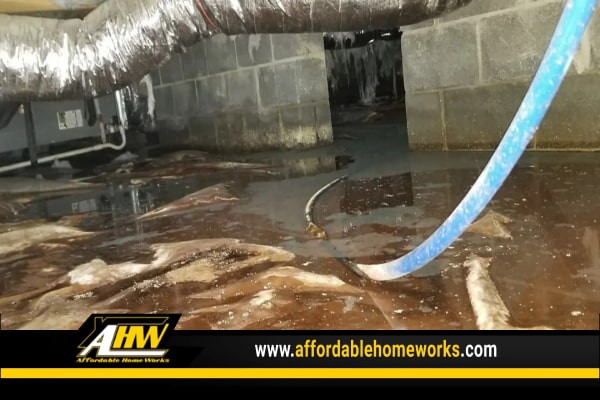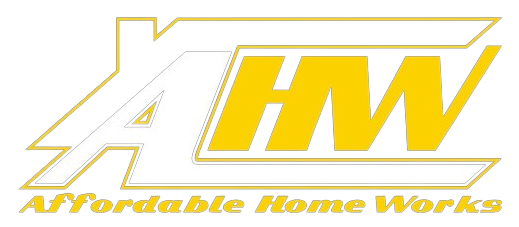
Sewage might seem intimidating for homeowners, but understanding what it is and how it impacts our homes can help us make informed decisions about our properties. It’s essential to be aware of the potential risks associated with sewage so that we can minimize them, including regular inspections of our plumbing systems to catch any issues before they become major problems. With some knowledge and proper maintenance, we can ensure our homes stay safe from potential sewage-related issues.
What Is Crawl Space Sewage?
Crawl space sewage is any moisture or liquid present in a crawl space (such as water from leaking pipes or overflowing toilets). This moisture can then mix with organic materials such as wood chips or soil, leading to the growth of mold, mildew, and other harmful organisms. If this sewage isn’t addressed quickly, it can cause structural damage to the home’s foundation and walls and create an unhealthy environment inside the home.
How Does Sewage Impact Homeowners?
The biggest issue with sewage for homeowners is backups in their drainage systems. Sewer backups occur when there’s too much waste in the system or clogs in the pipes due to grease buildup or tree roots. When this happens, raw sewage may leak into your home through drains or toilets, causing extensive damage and contamination.
Additionally, if you live near a body of water such as a river or lake, sewage runoff from your property can cause environmental problems such as excessive algae growth due to increased nutrient levels. To prevent sewer backups and pollution problems from occurring in your home, regular inspections must be done on your plumbing system to ensure everything is working properly.
What are the benefits of removing sewage from my crawl space?
If you are a homeowner, nothing is worse than finding out that sewage has seeped into your crawl space. Not only is it smelly and unsanitary, but it can also lead to a host of other problems, such as mold growth, structural damage, and pest infestations. Fortunately, removing sewage from your crawl space can help protect your home and provide many benefits.
Health Benefits
The most obvious benefit of removing sewage from your crawlspace is improved health. Exposure to raw sewage can spread infectious bacteria and viruses that cause serious illnesses such as hepatitis A and E. coli infections. It can also lead to respiratory problems like asthma or allergies due to mold spores in the air. By removing the sewage quickly and completely, you can reduce the risk associated with these illnesses.
Structural Benefits
Another benefit of removing sewage from your crawlspace is improved structural integrity. Sewage contains organic matter that can act as food for mold and other organisms that will cause damage to wood framing and insulation materials. Also, standing water in the form of pools or puddles can cause weakened foundations and encourage fungal growth on any organic material present in the area, such as paper or cardboard boxes that have been stored there. Removing this water quickly can prevent further damage to your home’s structure.
Pest Control Benefits
Removing sewage from your crawlspace can help keep pests away from your home. Sewage attracts a variety of pests, including rodents and insects like cockroaches which can carry disease-causing bacteria into your home if they are not removed promptly. In addition, some pests may find their way into areas where they were not previously present due to increased moisture levels caused by standing water in the crawl space, which could result in an infestation if left unchecked for too long. Removing this moisture source will help keep these pests away from your home for good!
What are some of the dangers of crawl space sewage?
Being a homeowner is not without its challenges. One of those challenges is the potential for sewage issues in your crawl space. Sewage in a crawl space can cause serious problems, including damage to your home’s foundation and health risks for you and your family.
Dangers of Having Sewage in Your Crawl Space
The most obvious danger associated with crawl space sewage is the potential for structural damage to your home due to waterlogged foundations or walls. This damage can be expensive to repair and even render parts of your home uninhabitable if left unchecked. Further, sewage in a crawl space also poses significant health risks due to the potential growth of mold, mildew, and other organisms that thrive on moist surfaces. These organisms can cause respiratory distress, allergic reactions, and other serious health conditions if exposed over long periods of time.
How Can I Prevent It?
The best way to prevent crawl space sewage is by regularly checking for signs of moisture in your crawlspace. If you see signs of water intrusion (such as wet floors or walls), address them immediately by repairing any leaking pipes or replacing broken seals around windows or doors that may be allowing water into the area. You should also check for standing water after heavy rains or floods; if you find any standing water in your crawlspace, address it quickly before it can seep into the surrounding areas and cause further damage.
Besides, investing in waterproofing products such as sump pumps or dehumidifiers can help keep moisture levels low enough so that they don’t pose a risk to your home’s structure or inhabitants.
How can I prevent crawl space sewage in the future?
If you’ve ever experienced sewage leakage in your crawl space, you know how unpleasant it can be. Not only does this problem create a mess, but it can also cause long-term structural damage to your home if not dealt with quickly and correctly. To avoid such an issue, here are some tips on preventing crawl space sewage from occurring again.
Check Your Pipes Regularly
The most effective way to prevent crawl space sewage is by regularly checking all of the pipes in your home. Check for any signs of corrosion or rust that could indicate a weakened pipe, as well as any blockages or leaks that could lead to future problems. It’s also important to ensure that your sewer line is free from debris and other foreign objects so that they don’t block the flow of liquids.
Install Backwater Valves
A backwater valve helps protect against sewage backups by preventing wastewater from flowing back into your plumbing system from the city’s main sewer line. This device should be installed at least six feet above the basement floor, so it doesn’t become submerged in case of flooding. Inspect the valve periodically for any signs of wear or damage that could interfere with its function.
Replace Old Piping Materials
If your home has older pipes, consider replacing them with newer materials designed to last longer and better resist corrosion or blockages. PVC piping is one option, as it is relatively inexpensive and easy to install without needing major work on other plumbing system parts. Other materials, such as copper or steel, may be more expensive but will provide greater protection against potential failures due to their durability and resistance to corrosion over time.
Conclusion
While sewers can be a nuisance, there are steps you can take to protect yourself from any potential issues in the future. By proactively inspecting pipes for leaks and blockages, installing backwater valves, and replacing older piping materials with more durable options, you can help ensure that your home remains safe and dry for years to come!
